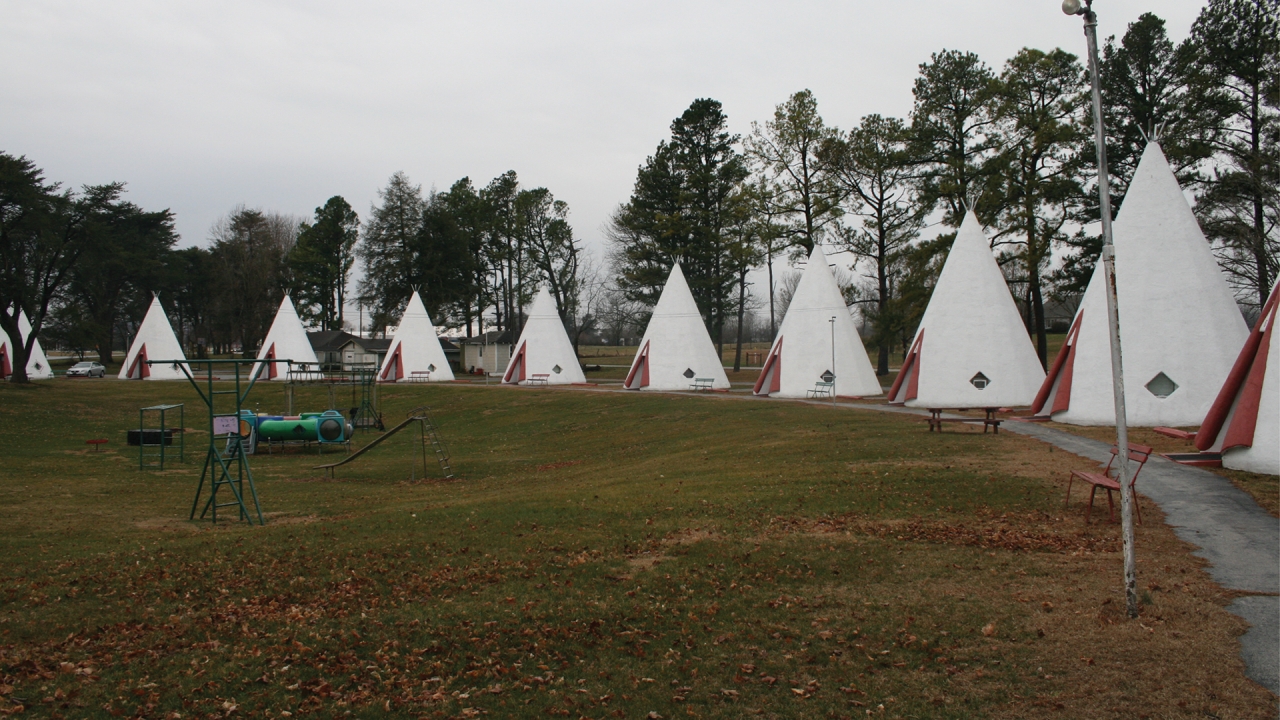Ellen C. Shakespear, The Interstate Tourist Trap: Sites of Reaction to a Landscape of Reason
Faculty Advisor: Prof. Christine Boyer (Primary advisor); Prof. Alison Isenberg, History Dept. (Second Reader)
In order to offer an updated interpretation of the American Interstate system as something more complex than a token postwar modernist project, my thesis examines those ubiquitous sites along its shoulders: tourist traps. Specifically, I argue that tourist traps, during the golden years of automobile travel (1956-1970), owed their existence to the growing Interstate system, yet simultaneously opposed the logics it created. In this project, I am concerned with the assorted ways in which the unique organizational formats of tourist traps utilized opposing conceptions of perspective and scale, and, ultimately, produced distinct experiences of place.
My first chapter begins in 1956, with the signing of the Interstate Highway Act, and during a time when technologies associated with electricity, automobiles, and electronics were reformatting the country at an unprecedented rate and scale. I argue that although the motivations behind the establishment of the Interstate system were justified by claims of strict reason and rationality, the legal consequences of the massive reformatting of land and infrastructure were complex and had spatial and organizational repercussions. Zones of confused territoriality alongside the Interstate were often perfect sites for tourist traps to flourish, as they were able to circumvent local laws and restrictions such as the sale of alcohol and other restricted products.
The second chapter of my thesis considers the relationship between tourist traps and the Interstate from a motorist’s perspective. I argue that the underlying design and engineering principles that guided the creation of the Interstate Highway sought to embolden the motorist, offering him privileged and panoptic views of a conquerable American landscape. In contrast, tourist traps often subverted this privileged optic condition of the motorist by distorting scale. The experience of infantalization created at colossal tourist traps also brings into dialogue critical discussions of Cold War America, such as contentment, masculinity, and loneliness.
Finally, the third chapter is concerned with the experience of the tourist trap at the most intimate level, considering how these two environments—the Interstate and the tourist trap—were experienced on the ground by tourists. Two types of tourist traps, the exotic destination and the nostalgic destination, are defined and considered in this section. I argue that exotic and nostalgic attractions demonstrate the extent to which tourist traps seized upon the blank-slate opportunity created by the Interstate, dreaming up and creating entirely anachronistic or geographically exotic postmodern theaters to dot the otherwise lifeless highway.
In total, this thesis argues that the Interstate system cannot, as is frequently done, be considered a tidy, case-closed example of a modernist project. With this understanding of the interstate, some critics like Lewis Mumford argued that the architectural counterpoint to the highway was the super rational tower. What I argue is precisely the opposite: that the Interstate in fact provided for, and in many ways nourished the distinctly non-modernist tourist trap. As I demonstrate throughout the thesis, the two sites operated in simultaneous opposition and dependency.




